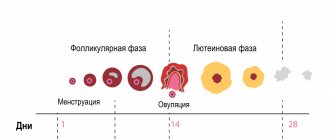Radiation diagnostics
CT semiotics
A soft tissue infiltrate is detected in the area of the cavernous sinus, spreading through the optic canal, the superior orbital fissure into the orbit; through the inferior orbital fissure, the infiltrate spreads into the pterygopalatine fossa and paranasal sinuses.
MRI semiotics
T1-weighted images: granulomas have an isointense MR signal
T2-VI, FLAIR: granulomas are iso-, slightly hyperintense
Contrast-enhanced T1-weighted images: granulomas usually accumulate contrast agent
MRA, CT angiography: narrowing of the lumen of the internal carotid artery may be observed.
Clinical signs
In addition to pain, some patients may experience exophthalmos and swelling of the conjunctiva.
The disease, as a rule, begins with severe pain in the area behind the eyeball, in the temporal, frontal, and superciliary areas. A few days later (usually no later than 14 days, less often simultaneously), double vision, limited mobility of the eyeball and strabismus on the side of pain appear. In approximately 1/4 of patients, when all the nerves that pass through the superior orbital fissure are affected, a complete disturbance of movements of the eyeball in all leads develops.
More common are “incomplete” forms of Tolosa-Hunt syndrome, in which the branches of the oculomotor, trigeminal, and optic nerves in various combinations are involved in the pathological process. Some patients experience exophthalmos and swelling of the conjunctiva of the eyeball. The average duration of pain is about two months. Also, in isolated cases, an increase in body temperature to subfebrile levels and nonspecific changes in a clinical blood test may be observed.
Differential diagnosis
It is carried out with various pathological processes leading to the development of secondary superior orbital fissure syndrome. These include primary or secondary (metastatic) tumors of the anterior or middle cranial fossa (meningioma, non-Hodgkin's lymphoma), neurosarcoidosis, vascular anomalies (carotid-cavernous anastomosis, dissection of the ICA wall, ICA aneurysms), orbital myositis, cavernous sinus thrombosis, hypertrophic basal pachymeningitis, Wegener's granulomatosis, polyarteritis nodosa, etc.
Fig.1. MRI of the brain, T2-VI in the coronal plane: in the projection of the left cavernous sinus an isointense infiltrate is determined, partially narrowing the lumen of the left ICA.
Fig.2. MRI of the brain in the axial plane, a – T1-FS after IV contrast, b – T2-VI. In the area of the right cavernous sinus, a zone of accumulation of contrast agent is determined with a partial narrowing of the lumen of the right ICA (a, green arrows); on T2-WI this zone has a hypointense MR signal (b, green arrows) due to fibrotic changes.
Fig.3. MRI of the brain, T1-VI in the axial plane after intravenous contrast (a, b): a - state before treatment: in the projection of the left cavernous sinus, apex of the orbit and superior orbital fissure, a tissue component is visualized, intensively homogeneously accumulating contrast agent: b – after treatment with glucocorticosteroids, there is a significant decrease in the size of the infiltrate.
Facial pain
The face is an important component of a person’s image; it reflects not only our mood and success in life, but also our well-being. Therefore, the significance of pain in this part of the body is difficult to overestimate.
Unfortunately, it is not always possible to make a correct diagnosis right away, because there are many reasons for the development of facial pain. Most often, both patients and doctors sin due to dental diseases. Often the patient even loses perfectly healthy teeth in an attempt to get rid of the pain before the correct diagnosis is made.
Why does it hurt?
Attention! This article will not
facial pain caused by diseases of the ENT organs, eyes and dental system, primary headaches (migraine, tension headache, cluster headache) are described (according to the International Classification of Headache Disorders, 2004).
Patients are often concerned about trigeminal neuralgia, Tholos Hunt syndrome, and atypical facial pain.
1. For trigeminal neuralgia
pain most often occurs in the area of the second and third branches of the nerve (upper and lower jaw). The disease is characterized by severe short-term attacks of pain lasting up to 2 minutes, which are provoked by irritation of a certain area of the skin of the face or the mucous membrane of the mouth or nose. Pain can be triggered by the most ordinary events - eating cold or hot food, wiping the face with a towel, etc. Usually, after the onset of an attack, a person does not cry or scream, but freezes in place, waiting for the severe pain to subside.
The causes of neuralgia can be brain tumors, multiple sclerosis, infectious diseases (most often herpes zoster), vasoneural conflict (contact irritation of the trigeminal nerve by a nearby artery).
Neuralgia of other cranial nerves (glossopharyngeal, laryngeal, etc.) can also cause facial pain, but are extremely rare.
2. If you gradually develop symptoms such as “boring” or “gnawing” pain in the eye, redness, double vision, drooping eyelid and exophthalmos (displacement of the eyeball forward, “bulging eye”), then most likely this is a syndrome Tolosa Hunta (painful ophthalmoplegia)
. Symptoms usually get worse over a few days. There may be spontaneous improvements. Another characteristic feature of this disease is the dramatic improvement with corticosteroids.
The diagnosis of Tholos Hunt syndrome is made if all other causes have been excluded, and there are many of them: infectious diseases, tumors, vascular lesions, sarcoidosis. The causes of this disease are not fully understood; it is believed that the main mechanism of development is autoimmune.
3. Atypical facial pain
is another cause of facial pain that is a diagnosis of exclusion. When examined and questioned, patients with atypical facial pain indicate areas of pain that do not fit into any zone of innervation of the cranial nerves.
The characteristics of pain can be very different, the manifestations are disguised as diseases of the teeth, ENT organs and other diseases. Such patients often have to go through many examinations by a dentist, maxillofacial surgeon, ENT surgeon, and neurologist. Moreover, the data from these examinations do not explain the cause of facial pain.
And that's not so bad. Healthy teeth are often removed, believing that facial pain is caused by dental pathology. Another problem is that patients with this disease often suffer from depression, anxiety and other mental disorders, which makes both treatment and diagnosis difficult. Actually, these pains are considered psychogenic. Most often they are provoked by stress or some kind of mental disorder.
Surveys
For facial pain, consultations with a dentist, ENT specialist, ophthalmologist, and sometimes an oral surgeon are often required to rule out pain that is NOT caused by neurological problems.
In most cases of facial pain, it is necessary to perform an MRI (often with contrast, in various modes) of the brain to exclude tumors, multiple sclerosis, vasoneural conflicts and other pathologies.
Treatment
In most cases of facial pain, with the possible exception of Tolos Hunt syndrome (which is treated as an autoimmune disease with hormones), you will be offered anticonvulsants (eg, carbamazepine, pregabalin, topiramate) or antidepressants (amitriptyline, duloxetine). The fact is that it is these groups of drugs that are most effective in treating pain.
If there is a vasoneural conflict (for example, with trigeminal neuralgia), you may also be offered a neurosurgical operation, when a special gasket is installed between the vessel and the trigeminal nerve, which prevents the artery from irritating the trigeminal nerve. Non-medicinal methods are also very effective - acupuncture, physiotherapy, biofeedback methods, psychotherapy, etc.
In any case, do not self-diagnose or self-medicate, consult a doctor.
Be healthy!
Maria Meshcherina
Photo istockphoto.com
Description example
Descriptive part (brain): in the projection of the outer wall of the right cavernous sinus, soft tissue formations (granulomas) up to 0.6 cm in diameter with a diffuse-homogeneous type of accumulation of contrast agent are determined.
Conclusion: The MR picture of a focal infiltrative lesion in the wall of the right cavernous sinus, taking into account the location, signal characteristics and accumulation of contrast agent, may correspond to the manifestations of Tolosa-Hunt syndrome.
Descriptive part (MRA): multiple small parietal filling defects are determined at the level of the subclinoid segment of the right ICA (ascending part) and siphon, the minimum diameter of the artery at the level of the subclinoid segment on the right is 0.2 cm.
Conclusion: MRA picture of narrowing of the lumen and decreased blood flow of the intracranial section of the right internal carotid artery, multiple small parietal filling defects at the level of the subclinoid segment (ascending part), siphon of the right internal carotid artery.
Features of the clinical picture
The symptoms of the disease, depending on its origin, have both common features and distinctive features for each individual case.
Autoimmune Tolosa-Hunt syndrome develops after infections, nervous stress, and hypothermia. It is characterized by an acute onset, moderate or severe pain in the eyeball area.
The oculomotor nerve is most often affected, limiting inward and upward movement of the eye. Patients experience divergent strabismus, drooping of the upper eyelid, mild exophthalmos, and swelling of the conjunctiva (the membrane of the eye).
Painful ophthalmoplegia, caused by a congenital disorder of cerebral circulation, occurs against the background of persistently elevated blood pressure.
It is distinguished by its acute nature and moderate pain syndrome. The abducens and oculomotor nerves are affected. Bulging eyes and swelling are not observed with this option.
Exophthalmos as one of the symptoms of STX
In the presence of a tumor, the disease begins subacutely. The main symptoms of Tolosa-Hunt syndrome in this case: exophthalmos, significant swelling of the membrane of the eyeball, paralysis of the cranial nerves (one or more).
The syndrome with orbital myositis develops moderately, with intense pain and pronounced bulging eyes, swelling and visual impairment (diplopia).
Tolosa-Hunt syndrome, which occurs as a result of inflammation of the lining of the brain, develops rapidly. In this case, there are no symptoms of infection and meningeal signs (Kernig reflex, increased muscle tone ─ rigidity). Swelling and exophthalmos do not appear.
Idiopathic CTX affects older people. Pain syndrome is not always expressed.
General symptoms of the syndrome:
- the disease always develops one-sidedly;
- simultaneous development of paralysis of the eye muscles and severe pain inside the orbit;
- damage to the oculomotor nerves;
- progressive onset of symptoms, from several days to several weeks;
- sudden, causeless weakening of the main symptoms of the disease (remission);
- the likelihood of relapses after several months or years.
What it looks like in real life:
List of used literature and sources
- Diagnostic imaging. Brain / Anne G. Osborn, Karen L. Salzman, and Miral D. Jhaveri. 3rd edition. ELSEVIER. Philadelphia, 2021. P.1237. ISBN: 978-0-323-37754-6
- Rohini Nadgir, David M.Yousem. Neuroradiology. 4th edition. ELSEVIER. Philadelphia, 2021. P.630. ISBN: 78-1-4557-7568-2
- Tolosa-Hunt syndrome [Electronic resource] / Radiopaedia.org: website. – URL: https://radiopaedia.org/articles/tolosa-hunt-syndrome-3 (06/11/2018)
- Neurology: national guide / ch. ed. E.I. Gusev, A.N. Konovalov, V.I. Skvortsova, A.B. Gekht. – M.: GEOTAR-Media, 2009. – 1035 p.
- Ponomarev V.V. Tolosa-Hunt syndrome: definitions, clinical picture, diagnosis, treatment // Medical news. – 2015. – No. 1. – P. 6-9.
Principles of treatment
The most effective method is immunosuppressive therapy aimed at unwanted reactions of the immune system. Here, hormonal drugs of the corticosteroid group are most effective: Prednisolone, Medrol are prescribed orally or intravenously. A clear improvement from hormone therapy occurs within the first three days.
In addition to the main treatment, symptomatic therapy is prescribed: analgesics to eliminate pain, anticonvulsants, vitamins, restorative complexes.
The prognosis is usually favorable. Provided accurate diagnosis and properly selected therapy, the disease can be treated, the symptoms disappear without a trace. Working capacity is completely preserved. However, with frequent relapses of the syndrome, the person should be transferred to light work and given disability.
It is impossible to predict the likelihood of developing Tolosa-Hunt syndrome, so there is no primary prevention. If symptoms such as double vision, pain in the forehead and eyeball appear, then a thorough examination is necessary.
But secondary prevention is aimed at preventing relapses and includes hormonal therapy, strengthening the immune system, avoiding stress, hypothermia, and inflammatory diseases.
Etiology of Tolosa-Hunt syndrome
Due to the fact that the pathology has various manifestations and begins suddenly, it has not yet been possible to establish the exact etiology. This is also due to the low occurrence of the syndrome. For this reason, doctors do not have the opportunity to properly study this disease. There are several assumptions according to which pathology may develop. The following etiological factors are identified in patients with Tolosa-Hunt syndrome:
- Malformation. This term implies abnormal development of the vascular system of the eyes. As a result of the malformation, mixing of arterial and venous blood occurs, which should not be normal. This disorder is more common among the female population.
- Autoimmune aggression. This factor is the trigger for many diseases. However, it is still not possible to answer the question of why immune cells begin to destroy body tissues. In most cases, “aggression” occurs after suffering stress and long-term infectious processes.
- Various neoplasms of the brain and cranial nerves. These can be either benign or cancerous tumors.
Tolosa-Hunt syndrome: symptoms of the disease
Pathology most often makes itself felt in old age. Both women and men can be affected by this syndrome. The clinical picture of the disease develops suddenly, without any prerequisites. The following symptoms are identified:
- Pain in the orbital region. Unpleasant sensations first appear in the area of the forehead, eyebrows, and head. Later, the intensity of the pain increases and spreads to the eyes.
- Diplopia. This sign appears after the development of pain. It seems to the patient that all the objects he looks at are split into two. It's hard to concentrate your gaze.
- Impaired mobility of the eyeball - ophthalmoplegia. Most often observed on one side. Its degree depends on the intensity and number of nerves affected.
- Edema of the conjunctiva.
- Exophthalmos. It is observed in the absence of treatment and frequent relapses.
- Strabismus. Occurs when the nerves are affected on only one side.
- Low-grade fever and deterioration.
These symptoms usually increase gradually and replace each other. In some cases, they are all observed simultaneously. Signs of the disease may suddenly disappear, just as they appeared. Nevertheless, without treatment, the pathology always makes itself felt again. The frequency of relapses is different for everyone, as is the duration of remission.









